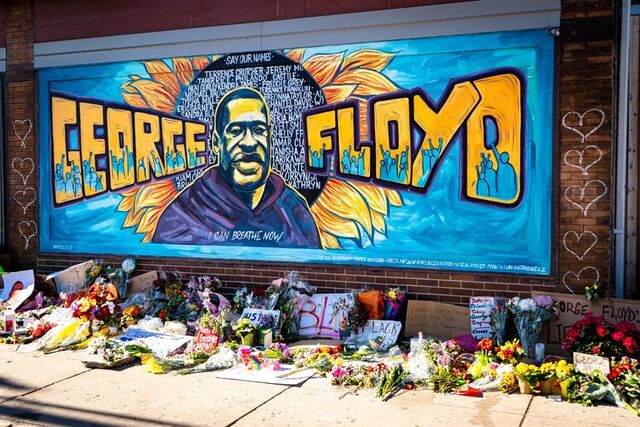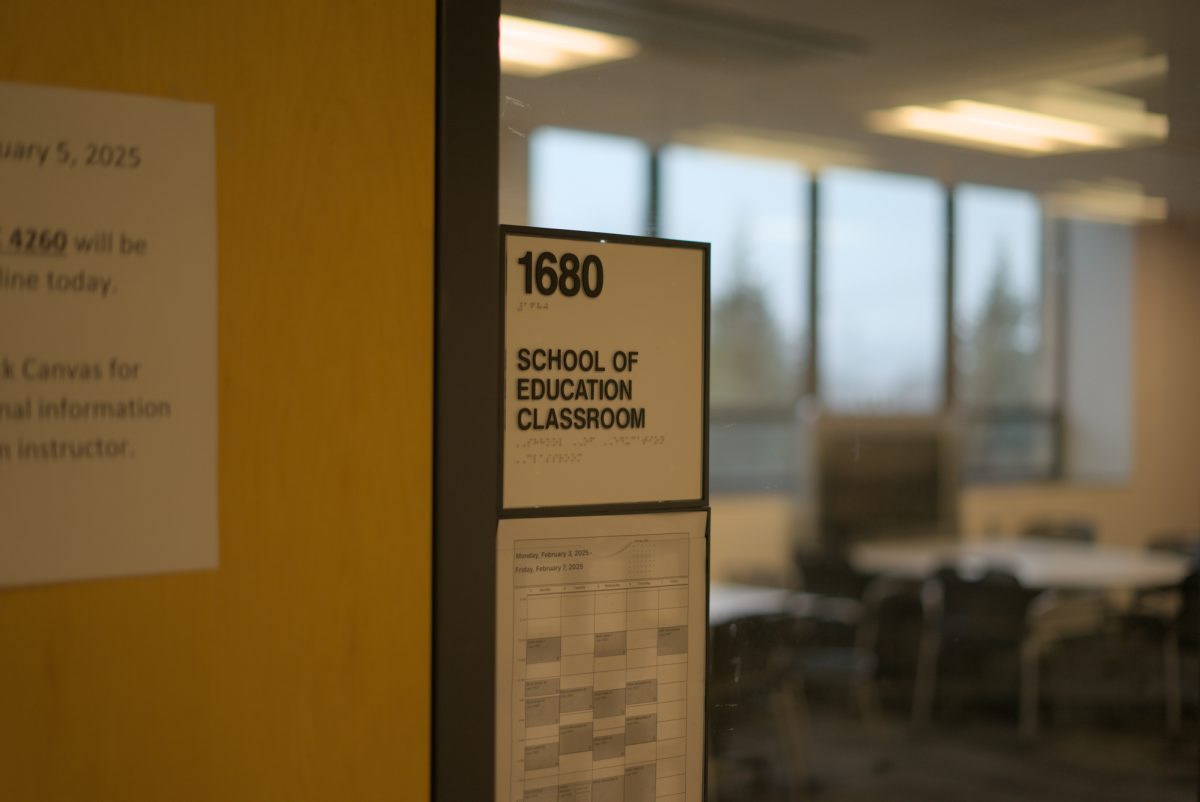Reflections on the Chauvin trial and policing reform continue in the Ames community
April 27, 2021
Editor’s note: A previous version of this article misquoted Teaching Professor Dirk Deam. The correction has been made. The Daily regrets this error.
As an attorney, Monic Behnken was not surprised when former police officer Derek Chauvin was found guilty on all three counts of murder, but as a Black woman who has grown up in America, she was shocked.
“It was clear that the prosecution was able to establish the elements of the offense beyond a responsible doubt from my perspective,” Behnken, associate professor of sociology, said. “I was not surprised because that is what the law tells us is supposed to happen.”
The defense claimed Floyd’s preexisting medical conditions were the key reason for his death. Hennepin County Medical examiner reported Floyd’s cause of death as “cardiopulmonary arrest complicating law enforcement subdual, restraint and neck compression.” The defense also argued Chauvin’s actions were ones of a “reasonable officer.”
Lt. Johnny Mercil is in charge of the Minneapolis Police Department training division and confirmed Chauvin’s use of force on Floyd is not a trained restraint for the department. Mercil said the level of restraint depends on the resistance. Video footages show Floyd restrained under Chauvin, unable to move.
The defense was unable to provide an explanation as to why Chauvin kept his knee on Floyd’s neck for over nine minutes. Chauvin was convicted of second-degree murder, third-degree murder and second-degree manslaughter.
Walter Suza, adjunct associate professor in agronomy, said this time, there was a ray of hope based on the composition of the jury and how active the national movement remained throughout the case.
Jurors are randomly selected from a pool of citizens from registered voters and adult driver’s license lists. All 12 jurors and two alternates answered a number of questions from attorneys in a process known as voir dire. Dirk Deam, teaching professor of political science, said juries are carefully selected by attorneys, and they are interested in jurors who assess the evidence and do so fairly.
“If anything, it illuminates the level of evidence and horror that is needed to convict someone in these circumstances; whether that means our system works or not is not for me to say,” Behnken said. “It seems to be the way it is working, whether or not we believe that’s justice, I think is a really different question.”
Chauvin’s sentencing was pushed back from June 16 to June 25, and he faces up to 40 years in prison. Behnken said it has been apparent Chauvin’s use of force was not acceptable policing practices, but it is important to widen the scope and examine those who are compliant with the force taken.
“We are nowhere near done yet,” Behnken said. “So I don’t want people breathing this sigh of relief, I don’t think we have seen the last of this case.”
Chauvin was one of four police officers at the scene. Thomas Lane, J. Kueng and Tou Thao face charges of second-degree murder and second-degree manslaughter and go to trial in August.
Anthony Mahama, assistant teaching professor of agronomy, said the lack of intervention from the three officers contributed to Floyd’s death and should be held accountable.
For Suza, the justice system represents a double-edged sword. Suza said while he can’t speak for all people of color, law enforcement is supposed to ensure public safety, and at times they do, but he is fearful of what would happen in a police encounter.
“That is what unfortunately occupies my mind, is my safety and the safety of my children even though law enforcement is supposed to be there to protect us,” Suza said.
Mahama said it is crucial for officers to be regularly trained in deescalation tactics and how to properly manage calls relating to mental health issues. Mahama recalled that he called the police to respond to a mental health crisis. Mahama said when the police entered, they failed to assess the situation and escalated the crisis.
“I was basically on my knees saying, ‘Please, she is not doing anything deliberately, she needs help,’ so I was pleading to them to get some help, but they were ready to force and handcuff this person and take her away,” Mahama said.
Mahama also called the police to aid his son who experienced a mental health crisis Feb. 12.
“In the struggle with him, one of [the police officers] had his knee on my son’s neck in the parking lot at Sam’s Club in Ankeny,” Mahama said.
Mahama’s wife had to ask the police officer to remove their knee so Mahama could assist in restraining their son.
“If we were not there, only God knows what would have happened,” Mahama said.
Mahama also reported multiple instances where he felt profiled by law enforcement while driving. Based on these encounters, Mahama acknowledged that law enforcement plays a vital role in society, but based on his own experiences, he has mixed feelings.
Since that encounter, Mahama called police to another incident to assist with his son, and one of the five officers responding was the one who used the neck restraint. Mahama said this time, they were calm and able to deescalate the situation.
Jason Tuttle, investigation commander and public information officer of Ames Police Department, said Ames Police is working to better community relationships through community sessions where members of the public can address concerns relating to policing.
Ames Police utilizes diversity training and procedural justice, which speaks to four pillars: fairness in the process, transparency in actions, opportunities for voice and impartiality in decision-making.
“Training has been a huge investment for us,” Tuttle said. “We will continue to look for ways to help our officers continue to build relationships in the community while helping people solve problems when they present them to us through calls of service for whatever they may be.”
Deam said he expects a change in policing practices because it is prudent.
“It is really hard to understand why a policemen, has an unarmed suspect cornered or in a car, has to empty his gun into the suspect,” Deam said. “Why is it necessary to shoot to kill? That seems like a training problem, and maybe that is not standard practice, but it is troubling.”
Bria Felix, junior in apparel, merchandising and design and president of the Womxn of Colour Network is from Minnesota. Throughout the trial, she recalled multitudes of military men, armed with rifles, guarding department stores in Minneapolis. Felix believes the guilty verdict is the first big step toward real change.
Felix said there have been times when she was concerned for her safety but could not call the police because she was fearful it would only endanger her more.
Ma’Khia Bryant was a 16-year-old Black girl who engaged in an intense fight with multiple people. The footage from police body cameras and a neighbor’s security camera shows Bryant lunging at someone with a knife in her hand followed by an officer firing four shots at Bryant.
Felix said she has been in a similar situation where she needed to defend herself but could not call the police for help.
“I can’t do it because you have this big Black man and this big Black woman in this situation, I just knew it wouldn’t end well, and that is what I always have to think about when I want to call the cops,” Felix said. “It makes me upset and scared because who is going to be there to protect me when I need them to other than myself? Because I can’t constantly be fighting these battles myself.”
Black people face a disproportionate number of fatal police shootings. White people are 60 percent of the population but only account for 41 percent of fatal police shootings. In contrast, Black people make up only 13.4 percent of the U.S. population yet account for 41 percent of police shootings resulting in death.
Within these statistics are individuals, all with their own stories and different personal experiences. In instances of police misconduct, Suza said there must be a greater examination of victims’ pasts as opposed to just writing them off as criminals who were disobeying the law.
“This wasn’t an accident, this was a killing, and I think the politics are introduced in many ways by people who have an interest in maintaining the status quo,” Behnken said. “For whatever reason, Black bodies are politics in this country, and so whenever you have this type of situation, we just know politics will follow because the experiences of Black people in this country are a matter of politics, no matter the topic.”
The Iowa House of Representatives passed the “Back the Blue” legislation in response to protests over the summer. The bill prohibits police from profiling on personal characteristics, including race. It also increases penalties for protesters and allows police to pursue civil remedies against someone who injures or files false complaints.
Behnken said time will only tell if legislation like this will have a chilling effect on protestors, but this legislation doesn’t necessarily reflect the wishes of all law enforcement.
“What I am hearing from police departments is they want to hear from their communities about how they can be better protectors, and so in some ways, the legislation is a separate issue from the way in which police might feel about their relationship with their communities,” Behken said.
Accountability isn’t an issue isolated to law enforcement, Felix said, when acts of hate or racism take place campus.
“All of the students of color on campus already speak out — we need our counterparts to do their part and help speak out,” Felix said. “When you see something is wrong you have to call it out, too. We can’t be the one calling it out for you all the time because we are not always in those spaces and in the spaces we are not allowed in. You need to take that initiative and call it out and make sure people know what they are doing is wrong.”







